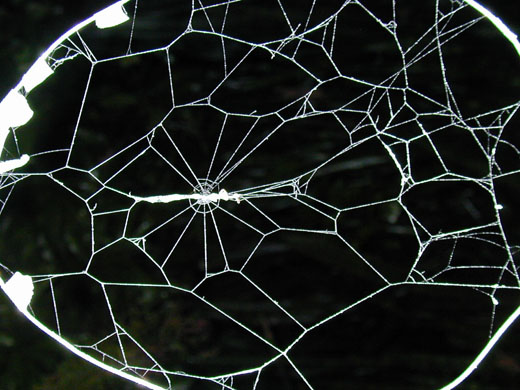Spiders “Under The Influence”
/https://tf-cmsv2-smithsonianmag-media.s3.amazonaws.com/filer/20110520102317larva2.jpg)
It hasn’t taken much research (aside, I guess, from trial-and-error) to know humans under the influence of anything, from martinis to marijuana, tend to function less efficiently.
But that doesn’t seem true for certain spiders, according to research done by William Eberhard, an entomologist at the Smithsonian Tropical Research Institute, and his team in Costa Rica. They found that orb-weaving Allocyclosa bifurca spiders “under the influence” of chemicals from parasitic wasps spun stronger webs.
The relationship begins when the female wasp traps the spider on its own web (how humiliating) and lays an egg on the spider’s abdomen. The egg grows into a larva that makes small holes in the spider’s skin so it can drink vital juices from the spider to survive.
After about a week, the larva matures—and having no apparent need for the spider any longer, kills it and drinks the rest of the spider’s internal fluids until only a husk of the former spider remains. (Sorry for those of you who are squeamish). The larva builds itself into a cocoon on the spider’s web, and emerges as a mature wasp a few weeks later.
How parasites affect their hosts' nervous system is a poorly understood area of research. Eberhard allowed wasps to lay the eggs on the spiders and watched as the larvae grew. He noted how the behavior of the spiders, and the shape of the webs, changed as the larvae matured, but removed the larvae right before they killed the spiders.

Eberhard found as the larvae matured, the chemicals began to “affect the spiders at higher levels of behavioral decisions that determined the overall design of the webs,” so that the web protects the parasite, and not the spider, as it matures. So, when the larvae are young, they simply trigger the spiders to begin building a resting web, as if the spiders were building the webs for themselves. When the larvae are more mature, they induce the spider to manipulate the web’s actual design so it better protects a cocoon instead of the spiders themselves.
By removing the larvae before they killed the spiders, Eberhard also allowed the spiders to “sober up” and resume their normal behavior (which they did, oddly enough, in the reverse of the order in which the changes occurred).
Experiments like these are helpful for studying future animal behavior because the manipulations parasites make in their hosts' behavior have "been honed by natural selection over long periods of time," Eberhard told the blog Smithsonian Science, "Understanding how these mechanisms work promises new, exciting and potentially powerful access into determining how animal behavior is controlled.”
So if you see a spider that looks a little off (or who spins a web that looks like the one to the left) you should feel bad for the poor guy—the larva may have already taken over.
/https://tf-cmsv2-smithsonianmag-media.s3.amazonaws.com/accounts/headshot/erica-hendry-240.jpg)
/https://tf-cmsv2-smithsonianmag-media.s3.amazonaws.com/accounts/headshot/erica-hendry-240.jpg)